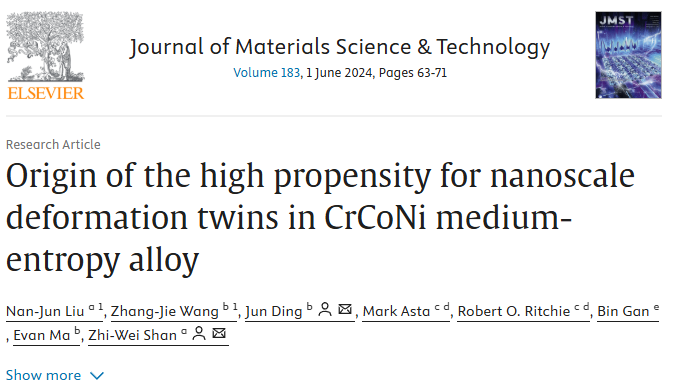
Single-phase face-centered cubic (fcc) high/medium-entropy alloys (H/MEAs) exhibit a much higher tendency to form nanoscale deformation twins than conventional fcc metals with similar low stacking fault energies (SFEs). This extraordinary propensity for nanotwin formation in H/MEAs cannot therefore be explained by their low SFEs alone. Here, using in situ compression tests of CrCoNi in comparison with Ag nanopillars inside a transmission electron microscope, we found that in the CrCoNi MEA, a high density of nanoscale twins continuously formed with an average thickness of 4.6 nm. In contrast, for similar experiments on Ag with almost identical SFE, following the nucleation of a few twins, they could further thicken to above one hundred nanometers by twin boundary migration. Molecular dynamics calculations indicated that in the highly-concentrated CrCoNi solid solution, the magnitude of the energy barriers for nucleating a stacking fault as a twin precursor in the pristine lattice and for the thickening of an existing twin both span a wide range and largely overlap with each other. Therefore, twin thickening through successive addition of atomic layers is prone to discontinuation, giving way to the nucleation of new twins at other sites where a lower energy barrier is encountered for partial-dislocation mediated fault formation.
Link:Origin of the high propensity for nanoscale deformation twins in CrCoNi medium-entropy alloy - ScienceDirect